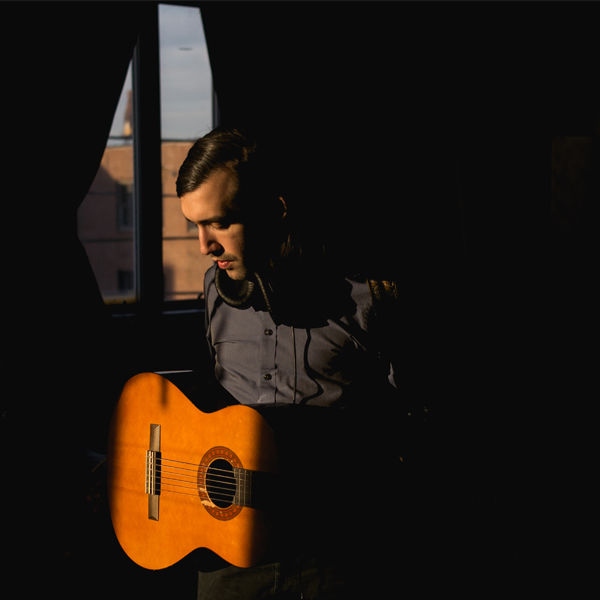“Music can propel narrative swiftly forward, or slow it down. It often lifts mere dialogue into the realm of poetry. It is the communicating link between the screen and the audience, reaching out and enveloping all into one single experience.”
— Film Composer, Bernard Herrmann
Philadelphia has a long history of talent influencing the direction of music across the country. Patti LaBelle, The Roots, Hall & Oates and Meek Mill are only a few artists that have helped the city earn its musically innovative reputation. Starting in the 1950s, on the corner of 46th and Market, American Bandstand brought dancing teenagers, Dick Clark, and rock and roll into homes across the country. The daily programming helped build the foundations of some of the most iconic musicians of our time: Prince, Jackson 5, Cher, and Aerosmith, all making musical debuts on the show. It laid the framework for the music video.
Music videos like Ready or Not by the Fugees, produced by Ruffhouse Records. OK, it’s not exactly the same, but it’s another pin on Philadelphia’s evolutionary map of music and cinema. Plus, Ruffhouse, a little farther up the road in Conshohocken at Studio 4, is the same label that brought us The Miseducation of Lauryn Hill.
The Google search results are endless when looking into Philadelphia’s music history, and there is no way a single blog article will do it justice. Rather, this article would like to focus on an organization, Weathervane Music, that is currently leaving its own unique mark on that rich Philadelphia history at the intersection of music and video in a new, exciting and educational way, right in the heart of Fishtown.
Headquartered out of Miner Street Studios, Weathervane, a non-profit that’s building community through the practice of supporting, engaging with, and creating music, continues to carry on and direct the tradition of musical performance and expression here in Philly. Expressway had the opportunity to sit down with Creative Director, Gabriel Greenberg, to discuss Weathervane’s musician-focused web series, Shaking Through. This musically driven documentary series invites artists into Miner Street Studios to chronicle the entire recording process.
Our biggest curiosity was about Gabe’s journey from a musical background to video production to creative directing between both mediums. He started with Shaking Through in the summer of 2014 as an intern after studying music at Wesleyan University. He was led to the web series through an organizational newsletter and started as a production assistant on the video crew, bringing with him all the technical and emotional knowledge of music education. We asked him more about his first day:
My first gig as a PA was on a Shaking Through shoot and the band was Peter Matthew Bauer — former keyboard player/guitarist of the Walkmen. This was a pretty big name so I was definitely excited. Peter English was the director for the shoot and Phil Bradshaw (Freshfly) was the DP with Larry DeMark shooting as well. This was the all-star team for sure, the folks who really developed and established the look and feel of the series. But I was honestly more enamored with the sheer scale of the production, it was a ton of people moving around fast, lots of gear, audio and video. Almost immediately at the start of the day, Peter had me run to CVS to buy Pete Bauer a big pack of nicotine (he was in the process of quitting smoking). Pretty soon after that, the slide guitarist needed to be picked up at 30th Street Station, he was running late. I drove over there and picked him up and not long after we got talking, I realized he was the guitarist/slide guitarist from Fleet Foxes. So I was pretty star struck, to say the least, not expecting to be surrounded by such real-deal musicians so soon. I actually missed the exit for the studio off 95 and spent about 10 minutes trying to stay cool and pretend I wasn’t lost.
We asked Gabe to speak more on his experience and transition into video, about the benefits of having a music education background and how that correlated for him into his current role at Shaking Through. He said:
I had to learn more about camera equipment and sometimes it was a trial by fire, sink or swim situation. But my understanding of story arc and music editing translated really well for me into the video production process. It’s very similar that way, when you are taking the whole and making the pieces fit, that’s my favorite part of the process.
Understanding these intersections is a huge asset to the mission as a whole, and he really has filled out the role of Creative Director. Climbing from the ranks of an intern to Creative Director is inspiring on its own. Gabe talked about that transition:
Peter English had set up four episodes as he was leaving, bringing in four separate directors and their teams. This allowed for a window into other people’s processes and the content and experience was amazing, but the format presented some consistency and sustainability issues. All of the creative teams were thrown into the mix and foreign to the Weathervane mission. Having the entire production plugged into the mission is essential to responsibly promote the artist, the production quality and also maintain the values of the nonprofit. So after those four episodes, we reassessed the format and I became the Creative Director. We established a consistency in the crew, I oversee each production and we brought in editors I would work right alongside. This created closer relationships and informed our sense of community in and outside of the organization.
Shaking Through is committed to providing inspiration and access to education across communities. This series looks deeply into the creative and technical processes of musicians, curators, and the audio production team. This requires a lot of time and passion, and he tells us:
I appreciate the many dedicated individuals contributing to the series.
It doesn’t matter the genre, music is integral to virtually all cinema. Shaking Through gets a rare opportunity in film to offer an audible authenticity to audiences. The mood and tone of the cinematography aren’t manufactured by an accompanying composition, it is very interestingly quite the inverse. Rather, the video element enhances the essential nature of the subject, amplifying the way we experience music.
We discussed how a recent Shaking Through, “Enter Light”, focuses on artist Jesse Hale Moore’s development and the collaboration that goes into creating a song. The effect is profoundly immersive. The audience, the highlighted artist, and the production crew all have a chance ordinarily out of reach. Burgeoning artists get to have professional videographers and production teams lend perspective, while the crew is exposed to artists they are fans of, injecting another dose of passion and investment into the piece. This all comes together to link the audience and the experience. Making Moore’s hope, “to make something that people will be compelled to share” ring out true.
Shaking Through accomplishes this by spotlighting the subject and their motivation. The music is the content just as much as the footage itself. The emotional heavy lifting is not treated as an addition to complement the work, left in the audience’s subconscious. But rather, the subject, the art and artists, drives the motivation to focus. Gabe explains:
Film is used to direct the audience to see a particular vision. By pairing music with vision, it gives a heightened understanding of the artist.
This dual discipline approach amplifies the overall experience. This knowledge accompanied by the close relationship he has with post-production feeds back into the production.
He finds himself editing while it’s happening, maintaining an intuitive sense of position and place. The music causes the body to react, affecting camera operation, allowing for viscerally informed frames, focus, and movement. He tells us of the intimate working relationships he has and the process:
There is no formula — I think that musicians just seem to naturally “get” what matters to musicians because they live that life and work that craft all the time. It helps when our crew has a musical background of some sort. There is a certain natural rhythm to recording sessions that directors and cinematographers seem more tuned into during shaking through sessions. They just know where to look, where to direct their attention, they internalize the song, which is effectively the soundtrack for the film, and can anticipate lifts and drops and translate that into the movement or frame or focus of their camera.
Weathervane is doing something more for Philadelphia than helping define a genre or creating a new form of artistic experience — although they are doing that. It’s more than entertainment. They’re expanding the way we share our stories at the intersection of music and video. Shaking Through extends an opportunity to up-and-coming artists to work with industry experts, while giving wider exposure to their audience. Please be sure to check out the newest video, “Leann” about American Trappist. Your support not only helps the featured artists, but also the passionate individuals who come together to create and develop this series.

| Source: Shaking Through / American Trappist |
For what’s on the horizon, Gabe tells us that at its core, Shaking Through will want to continue to emphasize a specific cause or issue for a lasting project or initiative. One of those projects we really admire and suggest you keep an eye out for is “Songs in the Key of Free”. Gabe and his crew have teamed up with prison inmates to offer songwriting workshops. They will be recording an album, creating a lasting impact to be admired by the industry. A legacy of compassion and community built from a city whose musical reputation created a foundation that will continue to shape music and cinema.
Written By: Aaron Gadbury – Office Manager

When he isn’t filing, Aaron loves to argue the implausibility of astrology and eat BBQ chicken pizza.